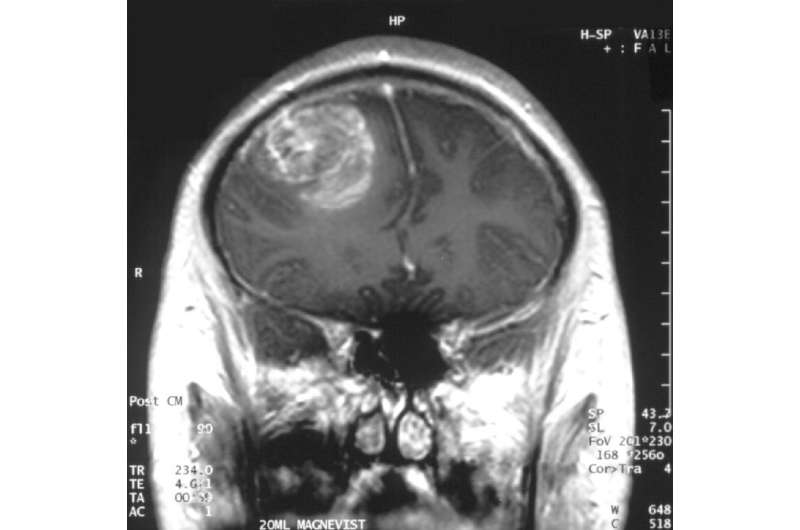Exploring drug repurposing to treat glioblastoma

MALT1 blockers have long been in clinical use for the treatment of blood cancers. A study suggests that these drugs could potentially also be developed as a treatment option for glioblastoma, the most common and lethal type of brain tumor.
For a long time, cancer research has largely focused on so-called oncogenes—genes that can cause cancer when mutated. While targeting these genes has led to the successful development of a number of valuable drugs, this approach is hampered by the fact that tumors often become resistant to these treatments.
A study conducted by Julie Gavard at the Université de Nantes, CNRS, INSERM, France, and her team, published today in the EMBO Journal, is now based on a different concept, termed non-oncogene addiction. During disease progression, cancer cells become strongly dependent on normal genes and cell functions to survive. These genes could thus serve as potential targets to attack tumor growth more efficiently. A gene called mucosa-associated lymphoid tissue l (MALT1), for example, is highly active in lymphoma, a type of blood cancer, and blocking MALT1 causes lymphoma cells to die. MALT1 blockers have been viewed as a promising new treatment for lymphomas.
The researchers now addressed the role of MALT1 in solid tumors, namely glioblastoma. Using data from The Cancer Genome Atlas, a molecular characterization of over 20,000 primary cancers, they revealed that MALT1 levels strongly correlate with patients' survival in brain cancer—patients with less MALT1 tend to live longer.
Gavard and colleagues then focused their attention on so-called glioblastoma stem cells, a self-renewing subpopulation of cells within the tumor that are likely responsible for cancer recurrence after treatment. They uncovered that targeting MALT1 with MALT1 blockers caused glioblastoma stem cells to undergo a rare form of cellular suicide termed lysosomal cell death in human cell culture experiments. Lysosomes are organelles within the cell that serve as the cells' digestive system. MALT1 keeps lysosomes low in cancer cells, which is crucial for their survival. Blocking MALT1 leads to an increase in lysosomes, which in turn impairs the cells' waste disposal system, eventually killing them. This points to the possibility of further exploring MALT1 inhibitors as potential treatment of glioblastoma.
More information: Kathryn A Jacobs et al. Paracaspase MALT1 regulates glioma cell survival by controlling endo‐lysosome homeostasis, The EMBO Journal (2019). DOI: 10.15252/embj.2019102030
















